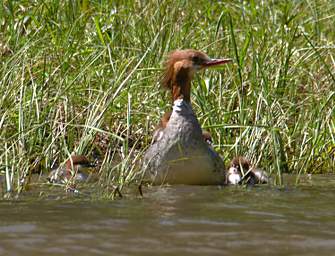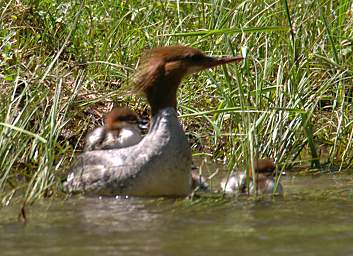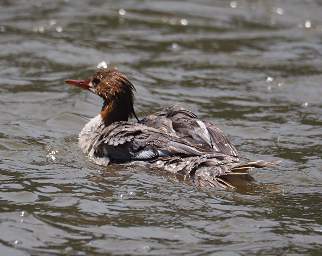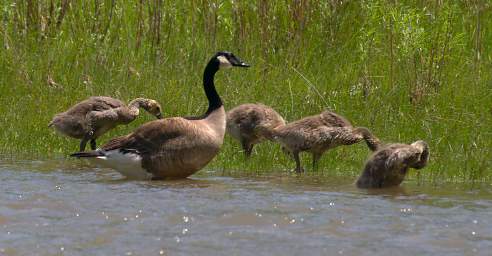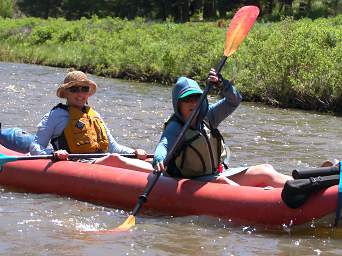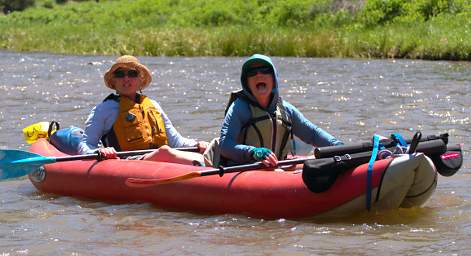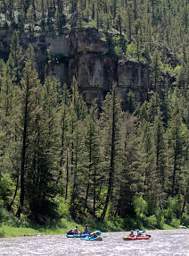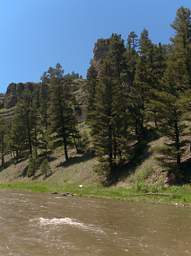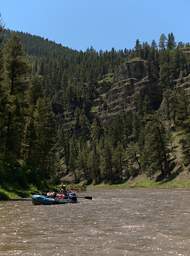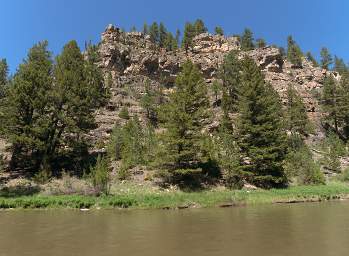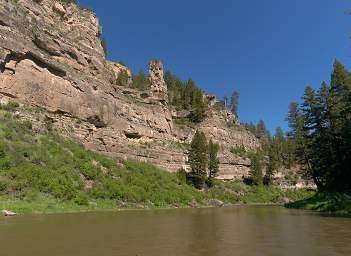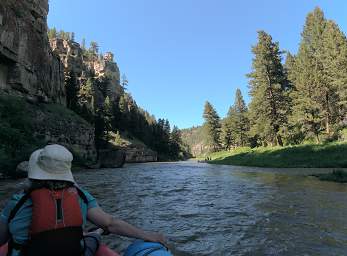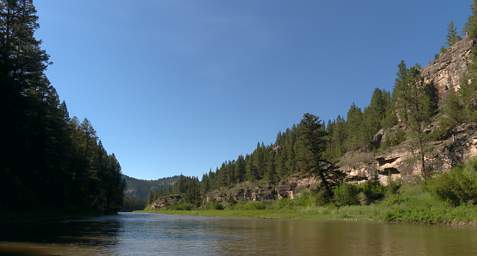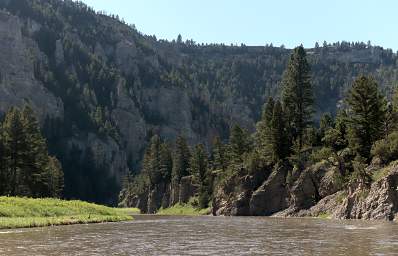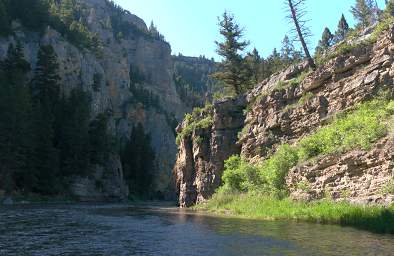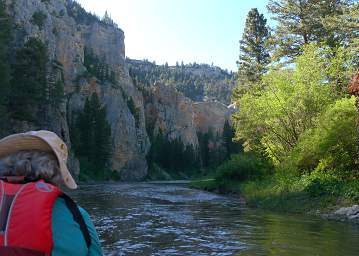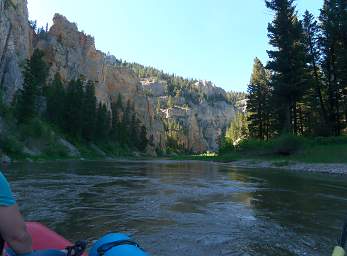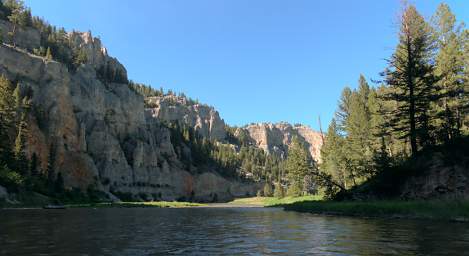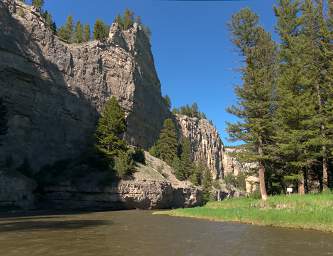Smith River Float
A Fun Trip on one of Montana's Iconic Rivers
Early June, 2016
Camp Baker to Canyon Depth
Click on any image for a larger view;
Contact garya at this domain if you would like the high quality image for printing
The
Smith River
in eastern Montana is known as a great multi-day float trip.
Floating the Smith requires a permit,
and I haven't drawn one for quite some time.
The last time I floated it was over twenty years ago and dona had never been.
But this spring some friends drew a permit and invited us along.
Yippie!
The permitted section of the river winds for 59 miles through a semi-remote canyon.
The river is known for fine trout fishing, if conditions are right.
The floating season is limited —
the water level drops rapidly as the snow-melt wanes.
It's generally a crap-shoot in terms of picking the best time to float.
Early trips can be rainy, cold, and muddy;
too late and the water is low and floating a hassle.
Even then, there are drastic swings in conditions from one week to the next.
People have had great warm sunny trips early in the season,
and cold wet ones later when conditions should be more benign.
Permit applications are submitted in February,
before one generally knows the snow-pack condition —
historically much of Montana's snow build-up occurs in late winter and early spring.
Campsites along the river are limited
and are assigned at the put-in.
They used to be assigned the morning you put on the river
but now are assigned the day before.
This is a real pain in the neck,
particularly for private floaters who have limited time.
In order to get better campsites,
you have to take a whole extra day at the put-in.
For outfitters with permanent staff it's not quite as inconvenient,
and I consider this management detail a deliberate effort to skew things
in favor of outfitters instead of private citizens.
Shame on you,
Montana Dept. of Fish, Wildlife and Parks!
You can and should do better.
The entire Smith ecosystem is now threatened by a
proposed copper mine
from a Canadian firm,
Tintina Resources,
now a majority controlled subsidiary of Australian mining giant
Sandfire Resources.
The ore body is in sulfide containing rock;
any tailings coming in contact with water will result in acid mine drainage.
The ore body is below the water table,
and will have to be continually pumped to remain dry.
That combination virtually guarantees contamination of the Smith
and destruction of its priceless — from environmental, recreational, and long-term economic perspectives — resources.
Mining companies in Montana have a terrible record of resource damage,
leaving behind them a trail of failed and under-funded reclamation bonds and bankruptcy.
The citizens of the United States have been picking up the pieces and paying for them for decades.
Our state is littered with the remains of toxic mining projects
where companies extracted millions of dollars in valuable resources
but left the public with decimated toxic natural landscapes in their wakes.
There is far too much at stake to let this company make another one.
We were originally going to paddle a canoe on this trip,
but Dona's back doesn't like paddling a canoe for long periods of time.
Our friends loaned us a raft,
so I rowed the raft and helped carry gear.
We had a total of ten people spread among
three rafts,
two one-person inflatable kayaks,
and one two-person inflatable kayak.
Two of the rafts were loaned to us by a friend,
Jim Jensen,
the executive director of the
Montana Environmental Information Center (MEIC).
MEIC is arguably the single most effective environmental organization in Montana
in terms of hardrock mining and coal development,
and the major organization putting effective pressure on our state agencies
to actually do their job as stewards of the public's resources.
If you aren't a member but care about Montana's natural resources,
you should become one.
Your small cost of membership will be well spent,
and you more than get it back any time you visit a wild place in our state.
Many of those places,
such as the world renowned
Blackfoot River,
would have long since been destroyed
if not for the work of MEIC.
John and Elizabeth did the heroic deed of showing up
a day early to put in for our preferences for campsites.
We had an afternoon engagement to attend the day before our launch,
so we dragged in late the night before our put-in.
The weather had been hot and clear and was predicted to remain that way.
We got up reasonably early
and after a leisurely breakfast
started loading the boats.
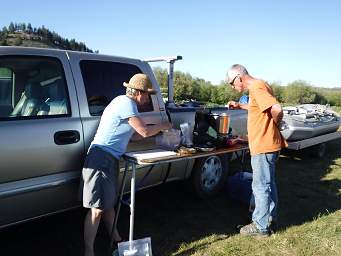 |
John and Elizabeth Cooking at the Put-In
Photo by Carol Kulish |
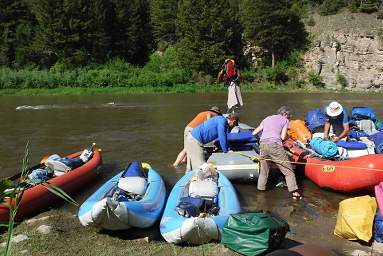 |
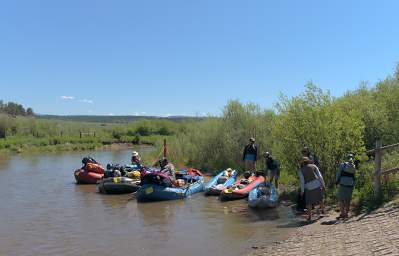 |
Loading Up
Photo by Carol Kulish |
Put In |
Eventually we shoved off.
We had a long float to our first camp,
but it was late spring in Montana, the days are long,
and the weather was gorgeous.
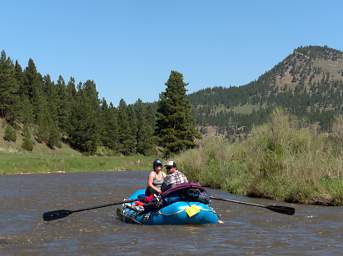 |
| Derf and Jill |
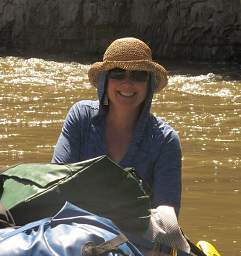 |
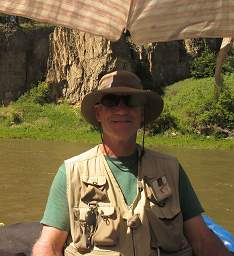 |
Elizabeth
Photo by John Rundquist |
John
Photo by Elizabeth Andrews |
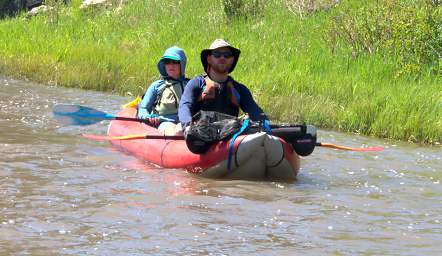 |
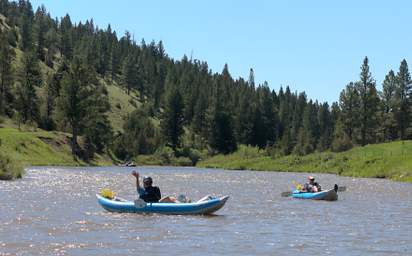 |
| Mel and Dave |
Bill and Carol |
There were quite a few
Common Mergansers along the river
and we got a kick out of watching their little chicks.
There were also lots of
Cliff Swallows,
Spotted Sandpipers
and Canada Geese.
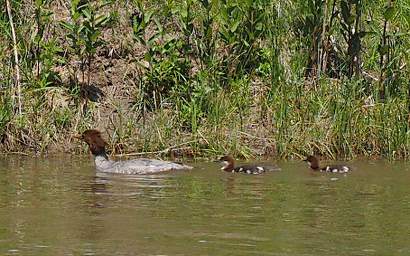 |
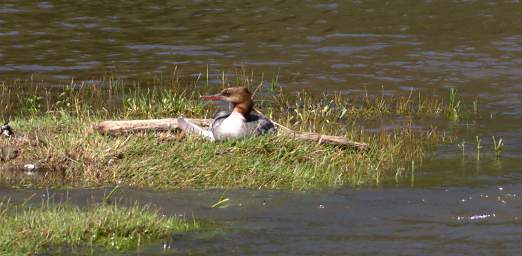 |
| Common Merganser with Chicks |
Common Merganser On Nest |
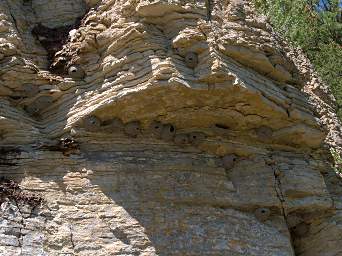 |
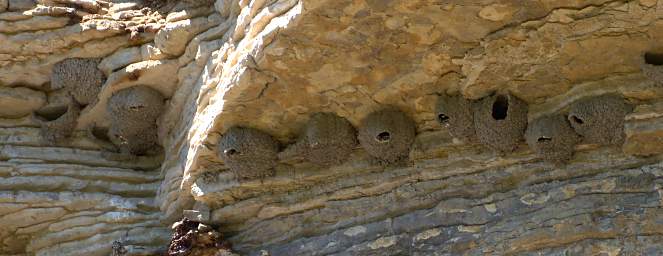 |
| Cliff Swallow Nests |
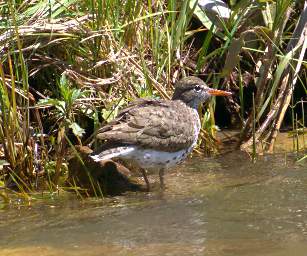 |
| Spotted Sandpiper |
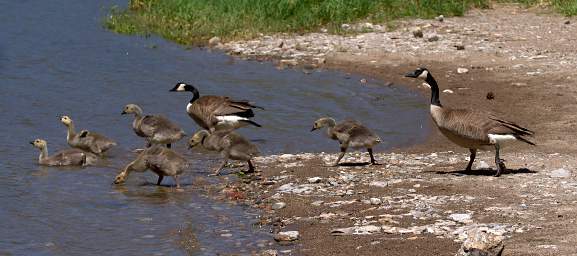 |
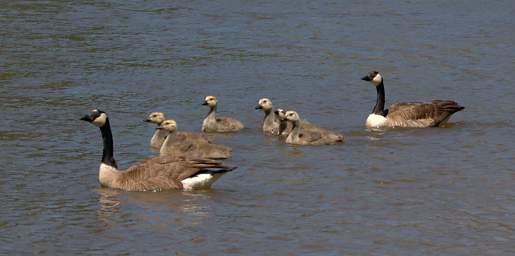 |
| Canada Geese |
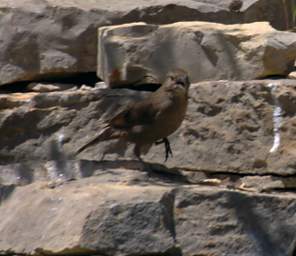 |
| Xxx |
The water in the Smith is not potable,
so you either have to treat it or schlep it from the top.
There are a couple of places along the river where you can obtain drinkable water,
and we stopped at a bank-side stream to fill up.
We also had frozen 1-gallon milk jugs full of water in the coolers
which would slowly melt as the trip progressed.
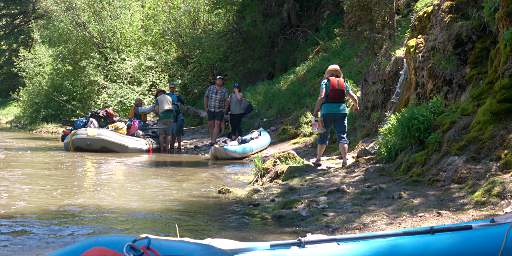 |
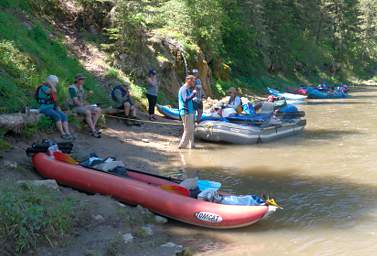 |
| Filling Water |
Lunch Stop |
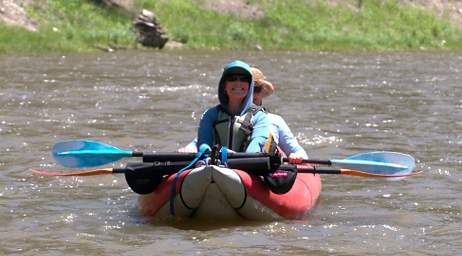 |
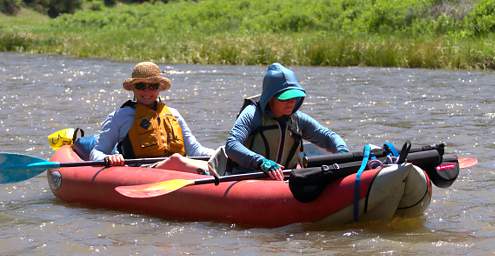 |
| Elizabeth and Mel |
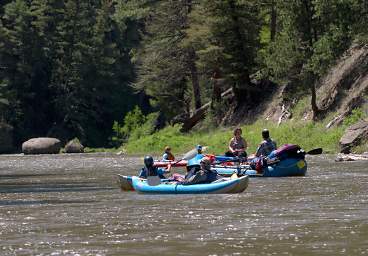 |
| Gang |
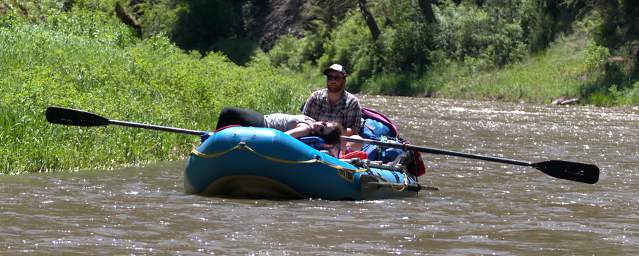 |
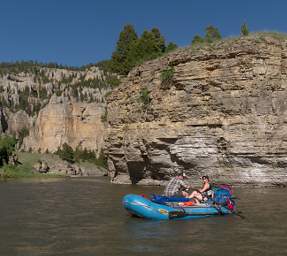 |
| Derf and Jill |
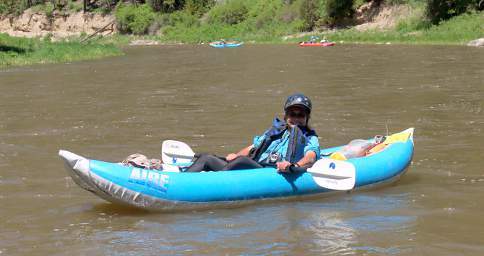 |
| Carol |
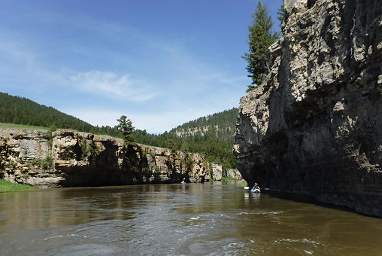 |
Photo by Carol Kulish |
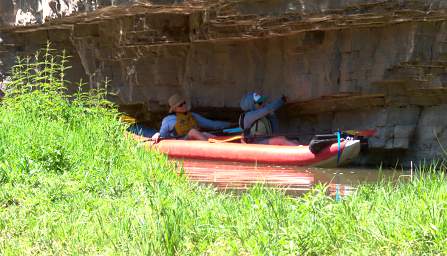 |
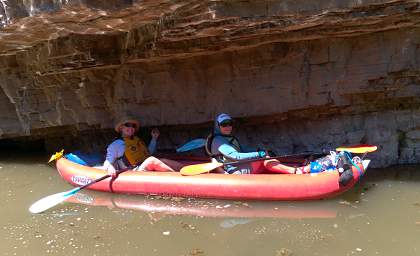 |
| Mel gets a Geology Lesson from Elizabeth |
The wildflowers along the river were a treat.
Dona and I particularly liked the
Tufted Evening Primroses
we occasionally saw along the bank.
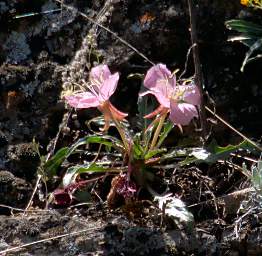 |
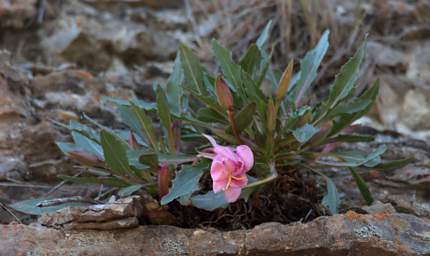 |
| Tufted Evening Primrose (Oenothera Cespitosa)
|
There is quite a bit of private land along the Smith,
ranging from large ranches to old cabins and unfortunately to recreational cabin subdivisions.
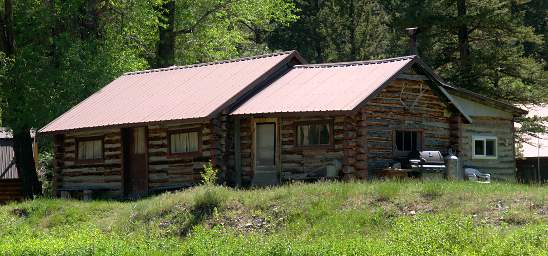 |
| Cabin |
It was still hot and sunny when we arrived at our chosen camp, "Canyon Depth".
We tied up, unloaded, and set up camp.
Some of us waded in to cool off,
some went exploring,
and some just relaxed.
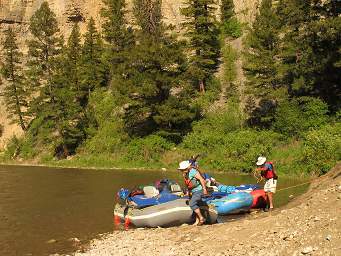 |
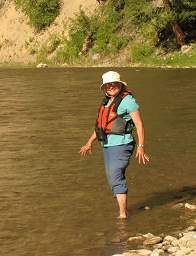 |
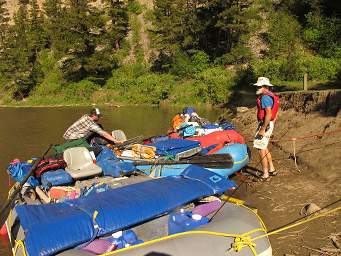 |
Tieing Up
Photo by John Rundquist |
Dona
Photo by John Rundquist |
Unloading
Photo by John Rundquist |
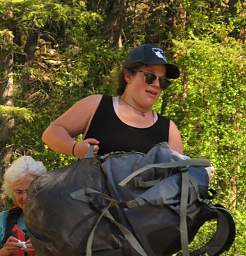 |
Jill
Photo by John Rundquist |
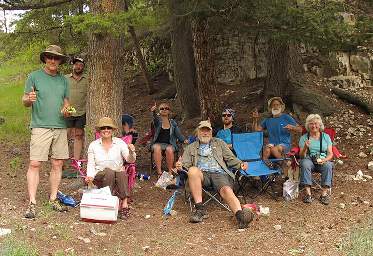 |
Group
Photo by John Rundquist |
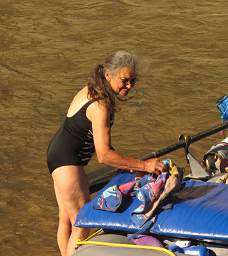 |
Carol
Photo by John Rundquist |
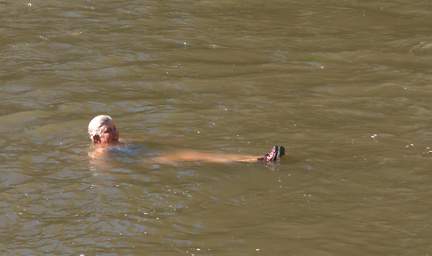 |
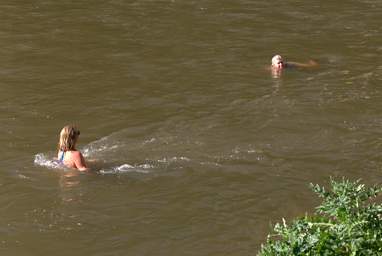 |
| Elizabeth |
Mel and Elizabeth |
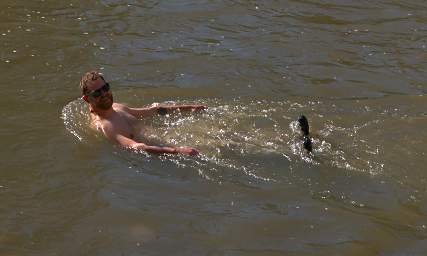 |
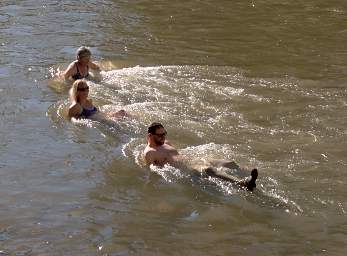 |
| David |
Elizabeth, Mel and David |
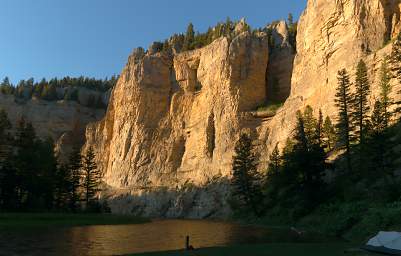 |
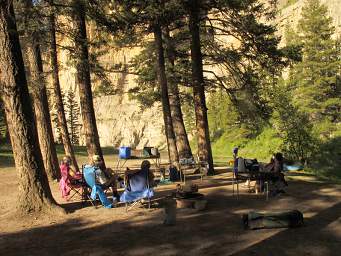 |
| Canyon Depth Camp |
| |
Photo by John Rundquist |
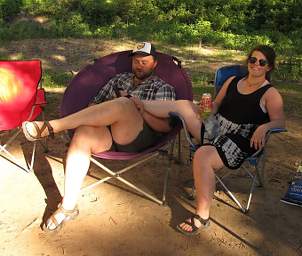 |
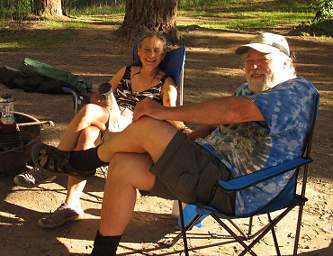 |
Derf and Jill
Photo by John Rundquist |
Bill and Carol
Photo by John Rundquist |
We had a large rain / sun fly which we set up for shade.
It worked great!
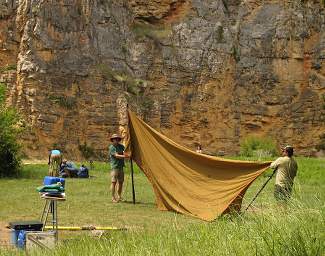 |
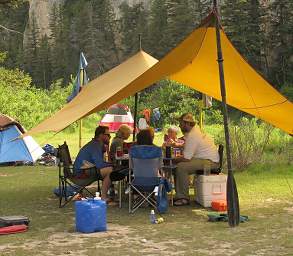 |
Setting Up Fly
Photo by Elizabeth Andrews |
Dinner
Photo by John Rundquist |
Carol and Elizabeth went for a hike behind camp in search of elusive wildflowers.
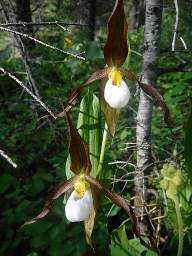 |
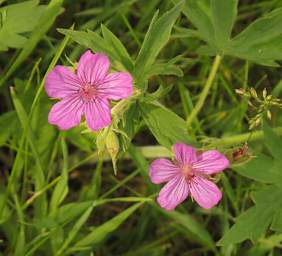 |
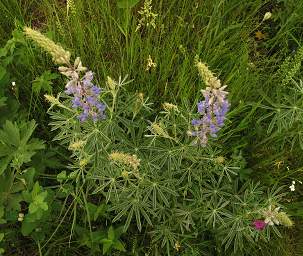 |
Lady Slipper
Photo by Carol Kulish |
Sticky Geranium
Photo by Elizabeth Andrews |
Lupine
Photo by Elizabeth Andrews |
We all brought our own breakfasts and lunches,
but dinner was a community affair.
The first night Derf and Jill were on — yummy!
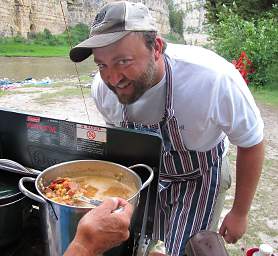 |
Chef Derf
Photo by John Rundquist |
We all went to sleep happy to be on river-time.











